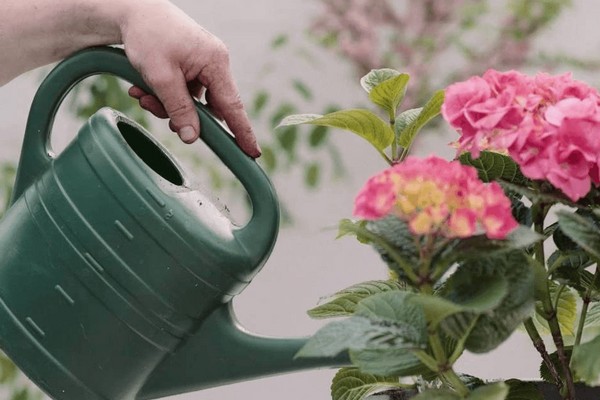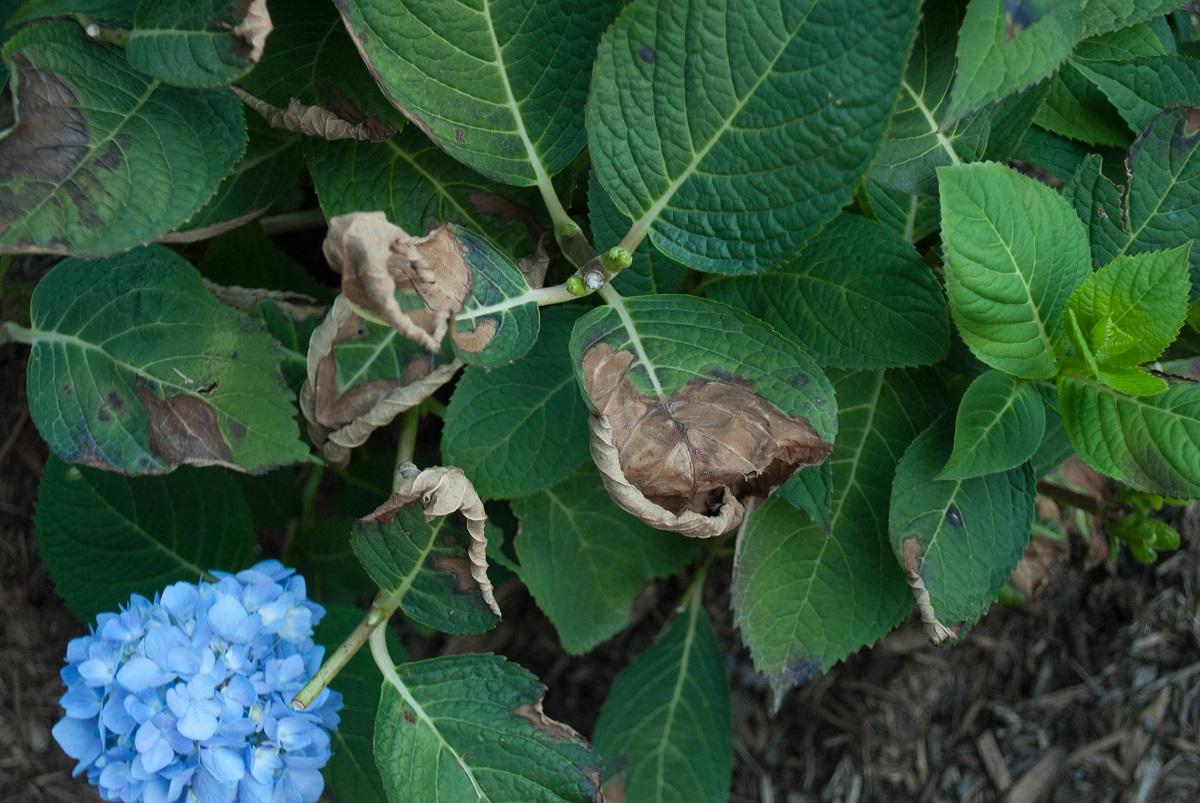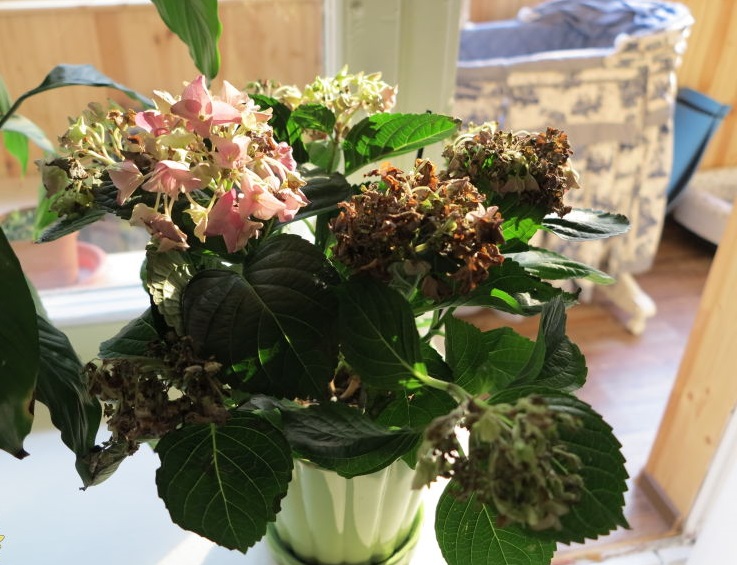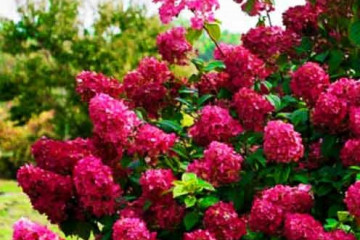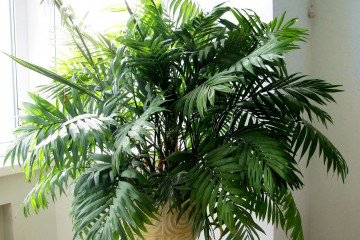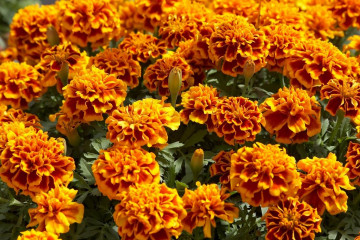Why hydrangea leaves dry around the edges - what to do and how to reanimate flowers
Content:
Lush hydrangea bushes, like other horticultural crops, can be subject to a number of common diseases. A diseased plant loses its decorative appearance, its foliage dries up and the inflorescences wither. Timely measures can be taken to save the flower.
Why do garden or home hydrangea leaves dry (wither) around the edges
Amateur gardeners who do not have enough experience may wonder why the garden hydrangea withers. In fact, any external changes in the state of the flower signal a violation of the conditions of maintenance and care, adjusting which can correct the situation.
Insufficient soil moisture
All varieties of hydrangea, whether large-leaved or paniculate, are hygrophilous.
Due to the drying out of the soil in the root zone, the bush will begin to fade, the leaves will dry, curl.
How to reanimate hydrangea in this case? Everything is very simple - the restoration measures of the bush growing in the open ground consist in proper watering and additional mulching of the planting site.
Excess soil moisture
Excessive watering is also detrimental to hydrangeas. Due to stagnant moisture, the bush can shed its foliage. If the greens begin to fall, then it is important to understand that the drying of the leaves is just a consequence of decay of the roots.
Low air humidity
Excessively dry air is one of the main common reasons why hydrangea leaves dry at the edges. A plant growing outdoors will be helped by regularly spraying the entire aerial part.
A flower kept at home can also be irrigated with water from a spray bottle. Some growers use household humidifiers for the same purpose or install a container of water near the hydrangea tub.
Excessive lighting
Drying of the leaves is often the result of excessive illumination. Hydrangea generally does not do well in the open sun and requires shading. In a brightly lit area, the bush will begin to disappear. Transplanting or installing an artificial canopy near the plant can help in such a situation.
It is recommended to install a tub with home hydrangea on a window facing west or east.
Hypothermia
Hydrangea is a thermophilic plant; regions with cool climatic conditions and sudden changes in weather are not suitable for it. Due to sudden sharp temperature changes and gusts of wind, the hydrangea begins to ache, the leaves turn black and dry, the bush gradually withers.
Resuscitation measures will be reduced to normalizing the air temperature to the optimal level of +20 .. + 23 ° C.If it is impossible to create such conditions in the open field, then it is recommended to transplant the flower into a sufficiently capacious tub and transfer it to home content.
Heavy or dense soil
The density of the land in the place where the hydrangea is planted is very important for its comfortable existence and development.
The plant is shown a loose, light, but nutritious soil. Clay soil will interfere with the normal removal of moisture from the roots and the circulation of oxygen in the root zone. In such conditions, the root system of the flower will "suffocate", and the bush will suffer from nutritional deficiencies.
Increased or decreased soil acidity
For the normal development of hydrangea bushes, maintaining a certain level of acidity in the soil is required. The optimum pH should be between 4.0 and 6.0. In the earth with an alkaline reaction, the leaf plates of the plant will begin to brighten and dry out completely.
Lack of micronutrients
Nutrient deficiencies also lead to drying out of hydrangea leaves. To prevent this from happening, the plant is alternately fertilized with organic matter and mineral compounds during the season.
- So that the greens of the shrub do not turn yellow, starting in March it is watered with nitrogenous dressings.
- During the budding period, it is advisable to add potassium, phosphorus, iron.
- In preparation for winter, it is also recommended to use potassium-phosphorus preparations.
Watering with hard water
Hydrangea is very sensitive to the composition of the water it is spilled with. This is especially true for the content of lime impurities. That is why to defend water in open containers exposed to open sunlight.
Improper planting or replanting of shrubs
Quite often, hydrangea leaves begin to dry out due to a violation of the planting technique. Problems in this case can be divided into damage to the root system of the seedling and planting in the wrong place.
Root damage
The delicate roots of hydrangea require very careful handling when transferring the seedling to the open ground. That is why it is important to check the condition of the roots when buying a seedling.
Trimming the roots during planting is highly undesirable. The only exceptions are non-viable shoots, dry or dark brown. Healthy roots should be white.
Wrong location
Mistakes when choosing a site for planting can include other problems with drying hydrangea leaves:
- excess or lack of light;
- lack of protection from drafts and gusts of wind;
- excessive soil density and its unsuitable acidity.
The correct placement of the seedling can eliminate many subsequent difficulties.
Causes of leaf blackening
When hydrangea leaves begin to turn black and dry even with proper planting and proper care, you should carefully look at the bush for diseases. At the same time, the nature of blackening plays a key role in determining the disease and methods of dealing with it.
Dry blackening
When the edges of the leaves and their tips dry at the hydrangea, we can say with a high degree of confidence that watering with hard water takes place or the plant "burns" in open sunlight.
To revive the plant, the cause of the dry black spots must be removed.
Wet blackening
The loss of elasticity by the leaves and their darkening indicates that the plant:
- has undergone a sharp drop in temperature;
- suffers from waterlogging of the soil;
- not protected from gusts of cold wind;
- planted in too heavy and dense soil.
Why do hydrangea inflorescences dry
Due to violation of the rules of planting and care conditions, the hydrangea bush may refuse budding and flowering. Another variant of the problem is that the inflorescences begin to crumble.
Transplanting to a new, more suitable place and adjusting agricultural technology can save the situation. In this case, the movement of a flower from one area to another is carried out together with a root ball, trying not to damage the sensitive roots.
Drying branches
Treelike hydrangea shoots can also undergo drying out and other painful changes. The most common cause is various types of rot.
White rot
This fungal infection causes the plant to slowly die. It begins with infection of the root system due to waterlogging of the soil and the subsequent nutritional deficiency of hydrangea.
You can identify the disease by a whitish bloom in the form of flakes, while the branches may turn black. Proven fungicidal preparations (Fitosporin, Copper oxychloride), used in accordance with the instructions, help to cure the bush.
Gray rot
Parts of the bush that have exposed this disease soften, become watery, and become covered with a gray bloom. Subsequently, such areas die off and through holes are formed in their place.
The affected parts of the hydrangea are cleaned by hand and then treated with suitable fungicides. For garden specimens, it is recommended to use Rovral Flo 255 SC once every 3 weeks. Pure flowers or Fundazol are more suitable for indoor flowers.
How to save a hydrangea if it is withered
Having discovered that the leaves of the hydrangea turn black and dry, you can try to save it if you act immediately. You should not postpone resuscitation and treatment.
In the garden
In a street hydrangea that has begun to dry out, all non-viable shoots should be removed. If rot appears, the cut must be made in a healthy area, 1 cm below the affected part of the stem. In this case, the instrument must be disinfected after each manipulation, and the wounds are sprinkled with crushed coal.
After pruning, the bush is sprayed with a suitable preparation.
In a pot
Indoor hydrangea, temporarily kept outdoors in the summer, is brought into the house and also cut off. The remaining parts of the bush are sprayed with HOM or the one that corresponds to the identified disease.
Despite its tenderness, hydrangea is a fairly persistent plant. Even if the entire aerial part of the bush has dried up, you should not immediately destroy the plant. When the conditions of care are restored, the dormant axillary buds can awaken in the bush, and after a while it will recover.

